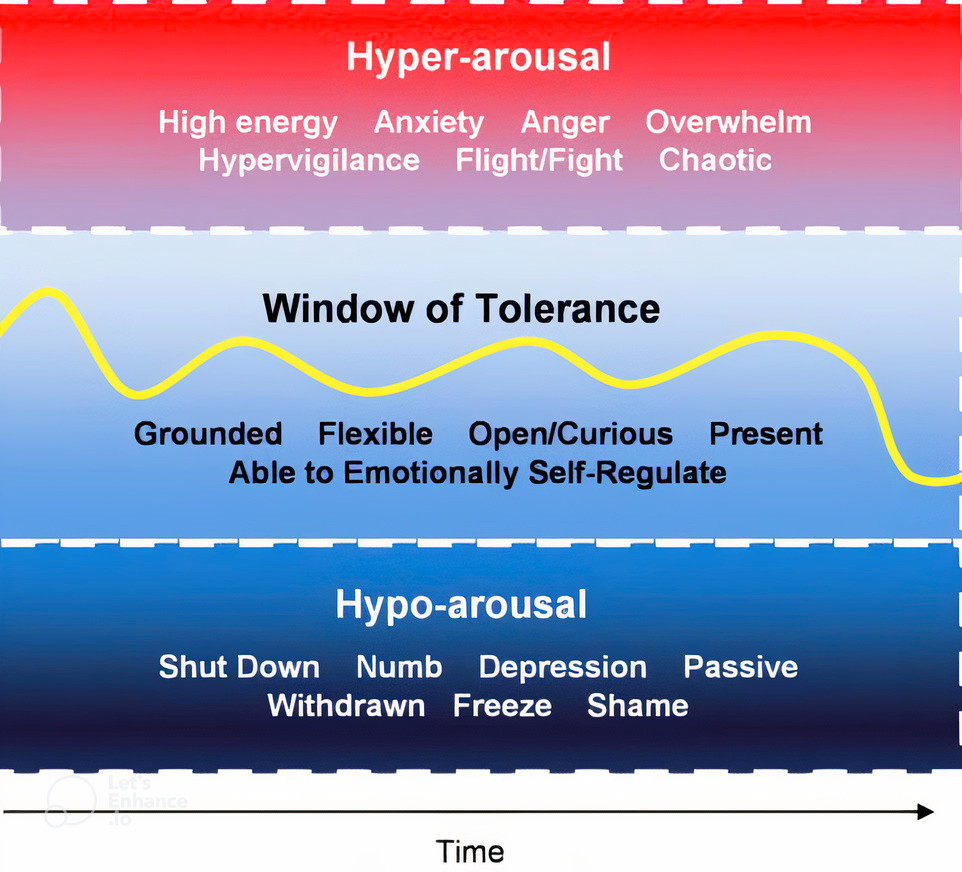Sapna Mathews, Senior Counsellor
Imagine around 200,000 years ago, you were walking through a jungle and a tiger appeared. Unlike the tiger that has claws and fangs, a human is pretty helpless in the wild. He/She can only rely on the quickness of their brain to escape from danger and find safety.
Once your eyes meet those of the tiger’s(trigger), it would need to, in a fraction of a second, galvanise the autonomic nervous system and other body parts to respond by either fight (confront the tiger), flight (run as fast as a human can to escape the tiger), or freeze (the body shuts down and becomes still to avoid the predator’s detection). Over many years of surviving in the wild, natural selection would happen: the humans whose brains could do this well would survive and pass their genes down to the next generation.
Fast forward to today, the threats and triggers are different. Instead of a tiger lurking, we have work pressures, traffic jams, spouses who are overwhelmed, or financial burdens looming. Yet, the brain would still respond in about the same way. The threat could be a physical one, like experiencing an accident or abuse. It could also be a psychological threat, such as dealing with a break-up or stress from work. The body and brain, especially the amygdala, would then be activated to keep you safe. Your brain would direct your body to:
1. Fight
- Examples include exhibiting verbal aggression or confrontational behaviours like arguing, raising voices, controlling behaviours like threatening, escalating a sense of competitiveness.
2. Flight
- Examples include procrastinating or avoiding certain tasks or situations, withdrawing from social interactions, or escaping into a digital world.
3. Freeze
- Examples include becoming mentally paralysed, unable to make decisions, inability to verbalise what one is feeling, delay important responsibilities, mental health conditions like PTSD or depression may develop in a prolonged freeze response.
4. Fawn
- Examples include difficulty expressing or asserting oneself and one’s needs, people pleasing, avoid confrontation and conflict, excessive compliance.
It is important to know that none of these responses are wrong, they are just what the brain will do on autopilot to ensure safety. The preferred response is developed as a result of past experiences and environmental factors. If for instance, you had domineering parents or siblings, you would have learnt through experience that fighting or trying to run away from the threat wouldn’t work. Then your brain would have to choose between freeze and fawn.
Hence, over the years, whenever dad got angry, you froze to avoid detection, or rather, his unwanted attention. But in adulthood, if your brain continued to go into freeze response, whenever someone in authority said something, you would comply and not assert yourself, perhaps resulting in temporary safety, but building a lifetime of resentment, feelings of powerlessness, and unsuccessful romantic relationships.
So, then what would move the baseline back to feeling safe? What would one need to do in order to not be constantly triggered into a fight flight freeze or fawn response? It starts with grounding or self-regulation.
Let’s imagine you are looking out of a window: you are calm, relaxed, confident, secure – the real you. If you have all the above, then you are in your Window of Tolerance. When life throws triggers at you, which it always does, we move out of this window of tolerance and go either into Hyper-Arousal (Fight, Flight) or Hypo-Arousal (Freeze, Fawn).

To get back into that Window of Tolerance, we need to calm ourselves using grounding or self- regulation techniques. There are many such techniques like ‘Deep Breathing’, ‘54321’, ‘Mindfulness’, ‘Recite Something’, and ‘Use an Anchoring Statement’. If you would like to learn some of these techniques from a professional, I invite you to come to EMCC as we can work together to calm your amygdala to perceived threats.
Therapists often work with individuals to help them expand their Window of Tolerance, allowing for greater emotional flexibility and resilience in the face of life’s ups and downs. This concept is commonly used in trauma therapy and mindfulness practices to help individuals better regulate their emotions and responses.
Remember that expanding your Window of Tolerance is a gradual process. It’s essential to be patient with yourself and seek professional help if needed, particularly if you have experienced trauma or have severe difficulties with emotional regulation.
If you feel you need professional help and emotional support, please reach out to EMCC. Our counsellors are here to help and support you.
To ensure that our services remain accessible, subsidised counselling is also provided.
For more information, click here.


